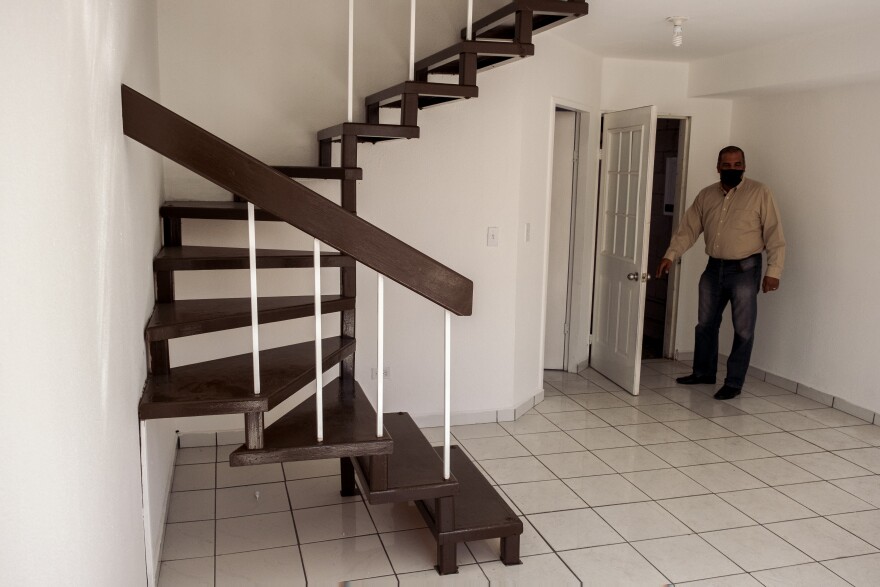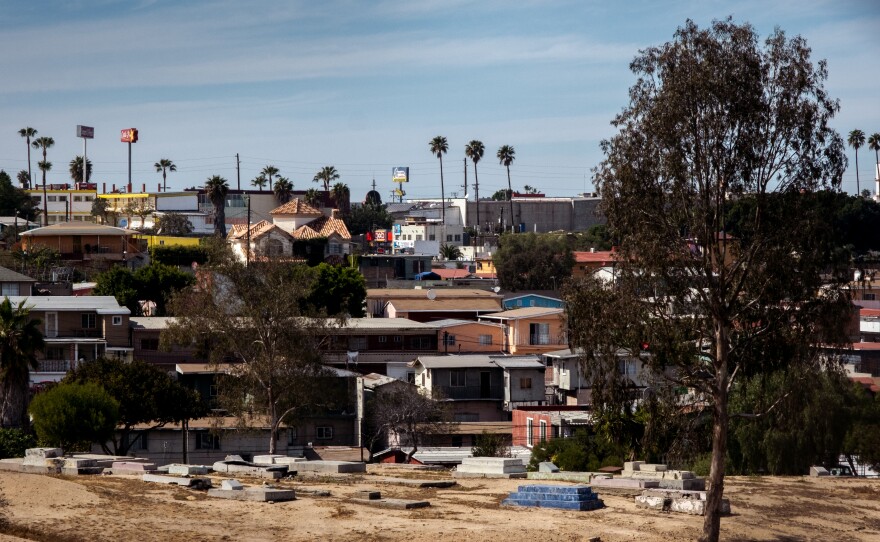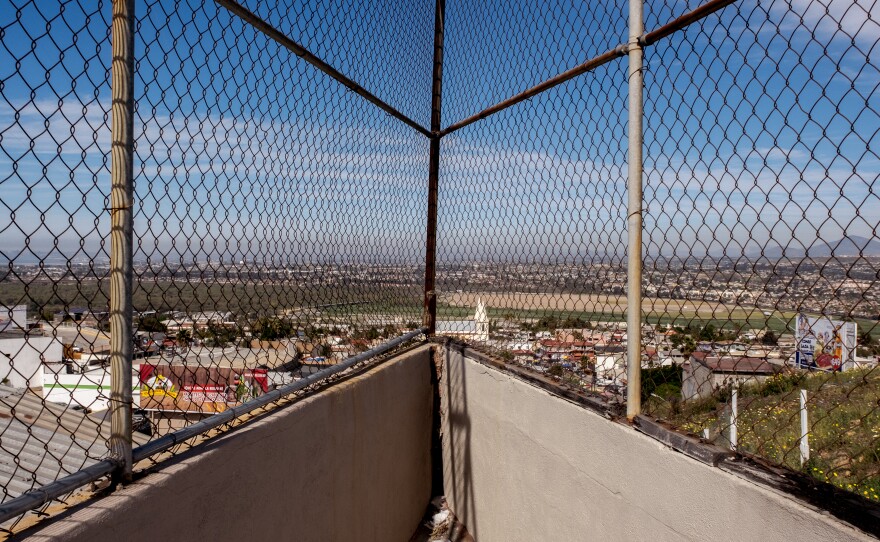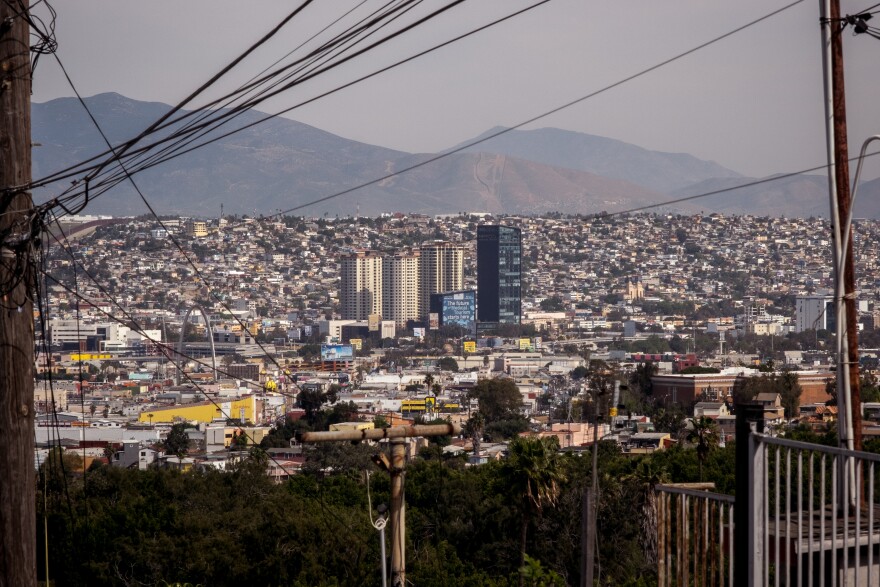Scott Asher is as Southern Californian as they come.
He was born in a hospital down the street from Disneyland. He surfed and skateboarded his whole life. His family has been in the region for generations.
But he can’t afford to live here anymore.
“I’m completely priced out,” he said. “It’s a complete barrier to entry. It makes you wonder, ‘if all these people are living there, how come I can’t?’”
Asher worked in the gig economy when he still lived in California. He’d drive Uber and work as a website design and digital artist freelancer. His last San Diego County rent was $1,200 a month to share a house with six roommates in Oceanside.
Now he lives alone in a two-bedroom apartment near the beach in Ensenada. He pays $550 a month.
Border towns such as Tijuana and Ensenada have long been refuges for those who can’t or don’t want to pay San Diego’s sky-high housing costs. But now, as America’s Finest City has also become its most unaffordable by at least one estimate, the stream of people heading south has become a flood.
Per capita income in San Diego is $38,073 a year, or $3,172.75 a month according to the U.S. Census Bureau. Realtor.com data from December 2021 shows the average cost of rent in San Diego is $2,970.
“If you’re talking about anybody who is doing a minimum wage job, which is a lot of people in this city, they can’t afford it,” said Laura Ann Fernea, the CEO of the City Heights Community Development Corporation and leader of the San Diego Eviction Prevention Collaborative.
A hot market
Gustavo Chacon Aubanel has seen the impact of this migration first-hand. He owns a realty company and was the former president of the Association of Real Estate Agents in Tijuana.
Tijuana’s real estate industry increasingly caters to American clients. “Out of 10 people who call us, seven of them are from the United States,” he said.
Whenever people from San Diego call, he has pitch ready to go.

“In National City, the average studio is $1,200,” he said. “Here, for the same amount, you can rent a house,” and not just any house — a three-bedroom house with two parking spaces.
Chacon Aubanel doesn’t just field calls from San Diego, they also come from Nevada, Arizona and even as far north as Washington state.
The pandemic has also played a role by exacerbating San Diego’s housing crisis — particularly among people who worked low-paying jobs in the hospitality, retail and service industries, Fernea said.
Cristobal Navarrette, a case manager who works with Fernea, said San Diego’s housing prices are pushing people to the street.
He remembers one woman called asking for help after getting a 60-day eviction notice.
“She thought that her family was going to fall apart,” he said. “She thought that she was going to be homeless with her family. She even shared that she was contemplating suicide.”
Impact on Tijuana
While struggling San Diegans can find refuge in Tijuana, the people who already live there are finding themselves priced out of the market.
Chacon Aubanel has already seen rents increase in the more affluent neighborhoods near the border crossing.
He used to be able to fund units in Playas de Tijuana, which is 15 minutes from the border, for between $500 and $600 a month. Now he is lucky to find something in the $900 range. He’s noticed similar price increases in other neighborhoods like Las Palmas and Hipodromo.

“It is something that is going to affect a lot of people – middle and working class,” he said. “It is going to affect them in the long run because the prices are going to be higher.”
Those who are the most squeezed are people in Tijuana’s working class. They are forced to compete in the same rental market as people who earn dollars instead of pesos.
The hard truth is while people in San Diego can go to Tijuana, the people of Tijuana don’t have a similar option.
“The same thing is going to happen that is happening in San Diego to Tijuana,” Chacon Aubinel said. “But the only difference is that they won’t have a place where they can move to except the exterior of the city where there is not a lot of development.”
Displaced Tijuana residents are ending up in colonias with far fewer services and higher crime.
A new life
Then there are Americans like Asher who are pushed away from Tijuana. He said an apartment similar to the one he pays $550 for in Ensenada could rent for well over $1,000 in Tijuana.
“If you’re willing to go to Rosarito, that’s where the price starts to fall because you’re adding an hour to your commute,” he said.
Jill Holslin, an adjunct lecturer at San Diego State University, got in early. She’s been living in Tijuana since 2011.

She’d long wanted to live south of the border and made the move after losing her San Diego condo during the Great Recession.
“I looked at this kind of crumbling economy in the United States as an opportunity for me,” she said.
Holslin canceled all of her credit cards and decided to only live off what she earned. The move, and lower housing costs, allowed her to pursue her art. More than a decade later, she says her life completely changed for the better.
“It’s been absolutely the most wonderful, freeing experience of my life,” she said.
Holslin quickly became involved in Tijuana’s art scene and still is to this day. She has taken some of her students on walking tours of Tijuana and feels like a contributing member of society.
“I’m not just here to take advantage of the cheap rent,” she said. “I’m here to participate in what’s going on in the society.”

-
UC San Diego’s school of Global Policy and Strategy professor Stephan Haggard previews a virtual forum being held Monday night about the ongoing crisis in Ukraine. Then, with San Diego becoming the most unaffordable city in the United States, some San Diegans are heading south of the border in search of a lower cost of living. What does that mean for the Tijuanense?
-
Some San Diegans priced out of the region are turning to Tijuana for affordable housing. Meanwhile, ballots go out today for the Assembly District 80 race. Also, more than two-million American children and teenagers live with a wounded or ill veteran. Many help with the veteran’s care.








